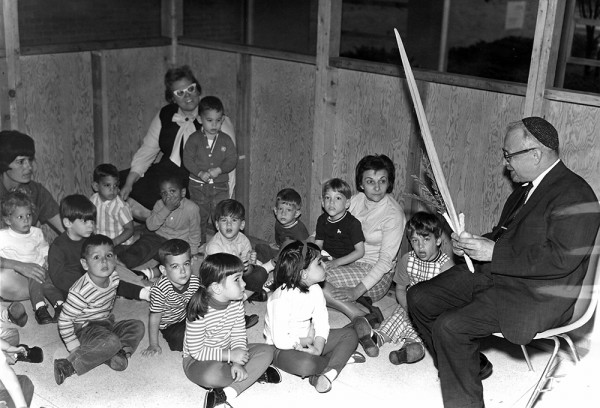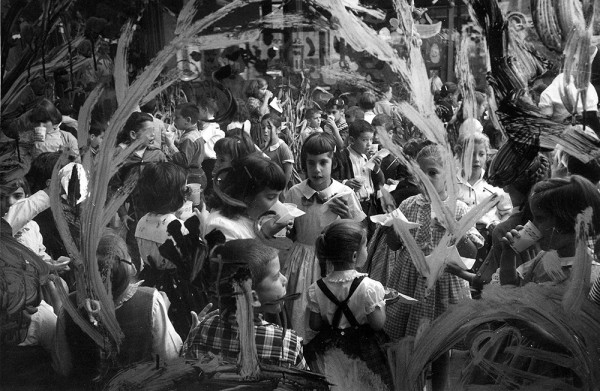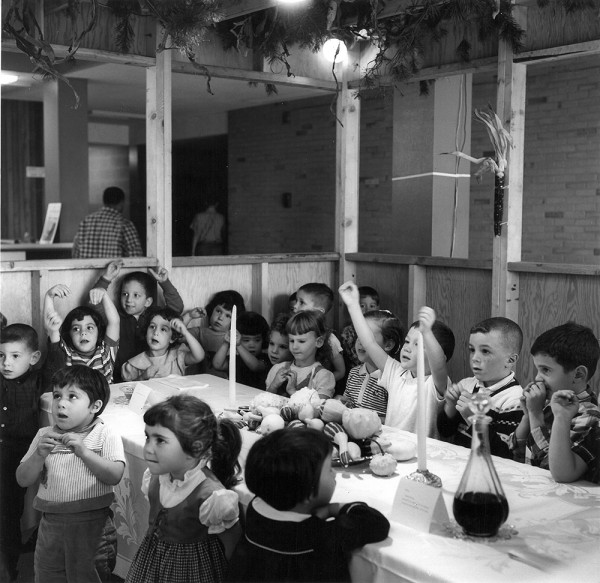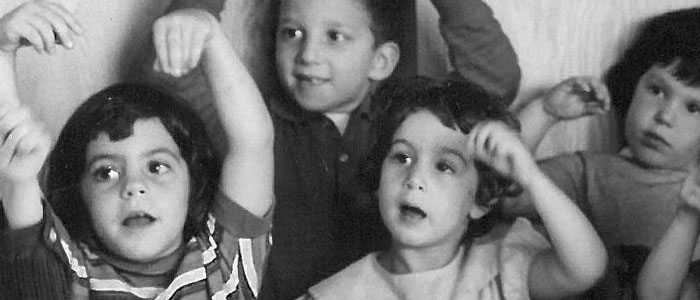Following the Days of Awe comes Sukkot, a colorful and joyous celebration, and indeed one of the longest festivals of the Jewish calendar. Feast of the Tabernacles, “the Festival of Booths,” Sukkot begins on the eve of the 15th day of the Jewish month of Tishri and is observed for seven days in Israel (eight days in the diaspora).
Historically, Sukkot commemorates the forty-year period during which the Israelites wandered in the desert, living in temporary shelters. Agriculturally, Sukkot is a harvest festival and is sometimes referred to as Chag Ha-Asif, the Festival of Ingathering.
The two days following the festival, Shemini Atzeret and Simchat Torah, are separate holidays, but are related to Sukkot and commonly are thought of as part of Sukkot.
The year was 1965
The place was the Jewish Community Center on 10 Mile in Oak Park. Rabbi Paneth leads pre-schoolers in a “lesson of the lulav,” with teachers Amy Singer (back row) and Harriet Lefko Kasle.

Celebration in the Sukkah, circa 1950s
Scene through a painted window, elementary-school children gather for refreshments in the sukkah at the Jewish Community Center in Oak Park.

Altogether now, everybody sing: a Tot Sukkot, circa 1950s
Remember Sukkot at the Curtis-Meyers Jewish Community Center? Recognize anyone in the picture?





